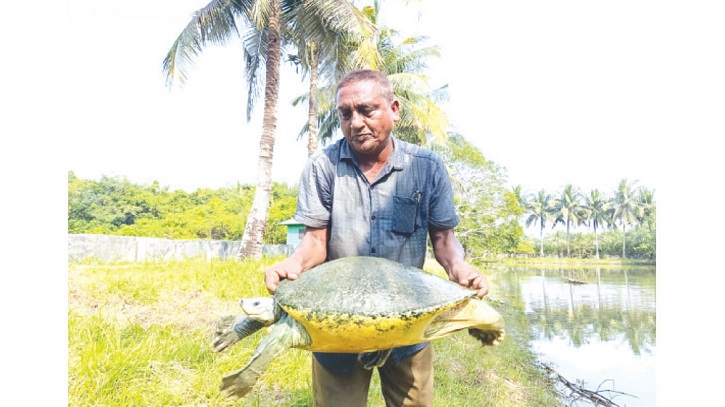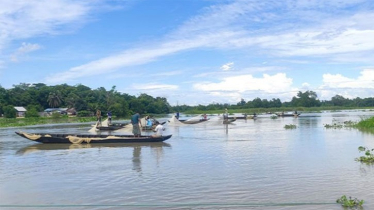
There was a time when a massive turtle gliding through the rivers and estuaries of Bangladesh would leave onlookers in awe. Weighing nearly 25 to 27 kilograms, the species known as Batagur baska—locally called the “Nodir Kaitta Kachhopa”—was once a majestic presence across the Sundarbans and the river systems of South and Southeast Asia. Today, the species’ survival depends on just a few dozen breeding adults. However, after years of conservation efforts by the Forest Department and international researchers, this once-vanished river giant is seeing a remarkable return to life.
Historically, Batagur baska inhabited waters stretching from the Sundarbans to the coasts of Myanmar, Thailand, and Malaysia. They were once common in the Padma, Meghna, Payra, and other rivers of southern Bangladesh. By the early 2000s, researchers feared the species had gone extinct globally.
In 2008, a team of zoologists began searching for any remaining Batagur baska individuals. Their expedition led to the discovery of eight turtles—four males and four females—in the wetlands of Noakhali and Barishal. The Forest Department rescued the turtles and relocated them to Bhawal National Park in Gazipur to initiate a captive breeding program.
By 2014, the center in Gazipur had successfully hatched around 94 baby turtles. To further strengthen the breeding program, the department transferred eight adults and their offspring to the Karamjal Wildlife Breeding Center in the Sundarbans.
According to Karamjal Wildlife Breeding Center’s acting officer, Howlader Azad Kabir, a total of 519 eggs have been laid at the facility so far, resulting in the successful hatching of 433 turtles. Currently, there are 457 Batagur baska individuals being reared at the center. This year alone, three females laid 82 eggs, from which 65 hatchlings emerged.
Bagherhat East Sundarbans Divisional Forest Officer Rezaul Karim Chowdhury said that selected turtles from the current population will gradually be released into their natural habitat in the Sundarbans, marking a crucial step toward restoring the species in the wild.
The revival of Batagur baska stands as a symbol of resilience and hope—a reminder that with dedicated conservation efforts, even the rarest creatures can find their way back to life.





